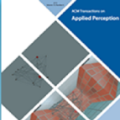Hand gesture is a new and promising interface for locomotion in virtual environments. While several previous studies have proposed different hand gestures for virtual locomotion, little is known about their differences in terms of performance and user preference in virtual locomotion tasks. In the present paper, we presented three different hand gesture interfaces and their algorithms for locomotion, which are called the Finger Distance gesture, the Finger Number gesture and the Finger Tapping gesture. These gestures were inspired by previous studies of gesture-based locomotion interfaces and are typical gestures that people are familiar with in their daily lives. Implementing these hand gesture interfaces in the present study enabled us to systematically compare the differences between these gestures. In addition, to compare the usability of these gestures to locomotion interfaces using gamepads, we also designed and implemented a gamepad interface based on the Xbox One controller. We conducted empirical studies to compare these four interfaces through two virtual locomotion tasks. A desktop setup was used instead of sharing a head-mounted display among participants due to the concern of the Covid-19 situation. Through these tasks, we assessed the performance and user preference of these interfaces on speed control and waypoints navigation. Results showed that user preference and performance of the Finger Distance gesture were close to that of the gamepad interface. The Finger Number gesture also had close performance and user preference to that of the Finger Distance gesture. Our study demonstrates that the Finger Distance gesture and the Finger Number gesture are very promising interfaces for virtual locomotion. We also discuss that the Finger Tapping gesture needs further improvements before it can be used for virtual walking.
翻译:在虚拟环境中,手势是一种有希望的新界面,在虚拟环境中,手势是一种有希望的新界面。虽然先前的几项研究提出了虚拟动作的不同手势,但在虚拟动作任务中的性能和用户偏好方面却鲜为人知。在本文件中,我们提出了三种不同的手势界面和动作算法,称为“手指距离”手势、手指数字手势和手指塔普手势。这些手势是以前对基于手势的移动界面的研究所启发的,是人们在日常生活中熟悉的典型手势。在本次研究中采用这些手势接口,使我们能够系统地比较这些手势之间的差异。此外,为了比较这些手势在虚拟动作任务中使用的手势和用户偏好,我们还设计并实施了基于Xbox Onecontrol手势的游戏界面。我们进行了实验性能研究,以便通过对手势的更深距离进行更接近的手势显示,我们用手势的手势和用户的手势的手势比也展示了我们的手势。我们用手势的手势的手势,我们用到更接近的手势的手势的手势和手势的手势的手势的手势比,我们用了手势比的手势对比展示比展示比展示比展示展示了这些手势的手势的手势。我们还展示的手势的手势和使用者的手势,我们展示的手势,我们展示的手势比展示展示的手势比展示展示展示展示展示了手势,我们展示了手势,我们展示了更接近了手势。


